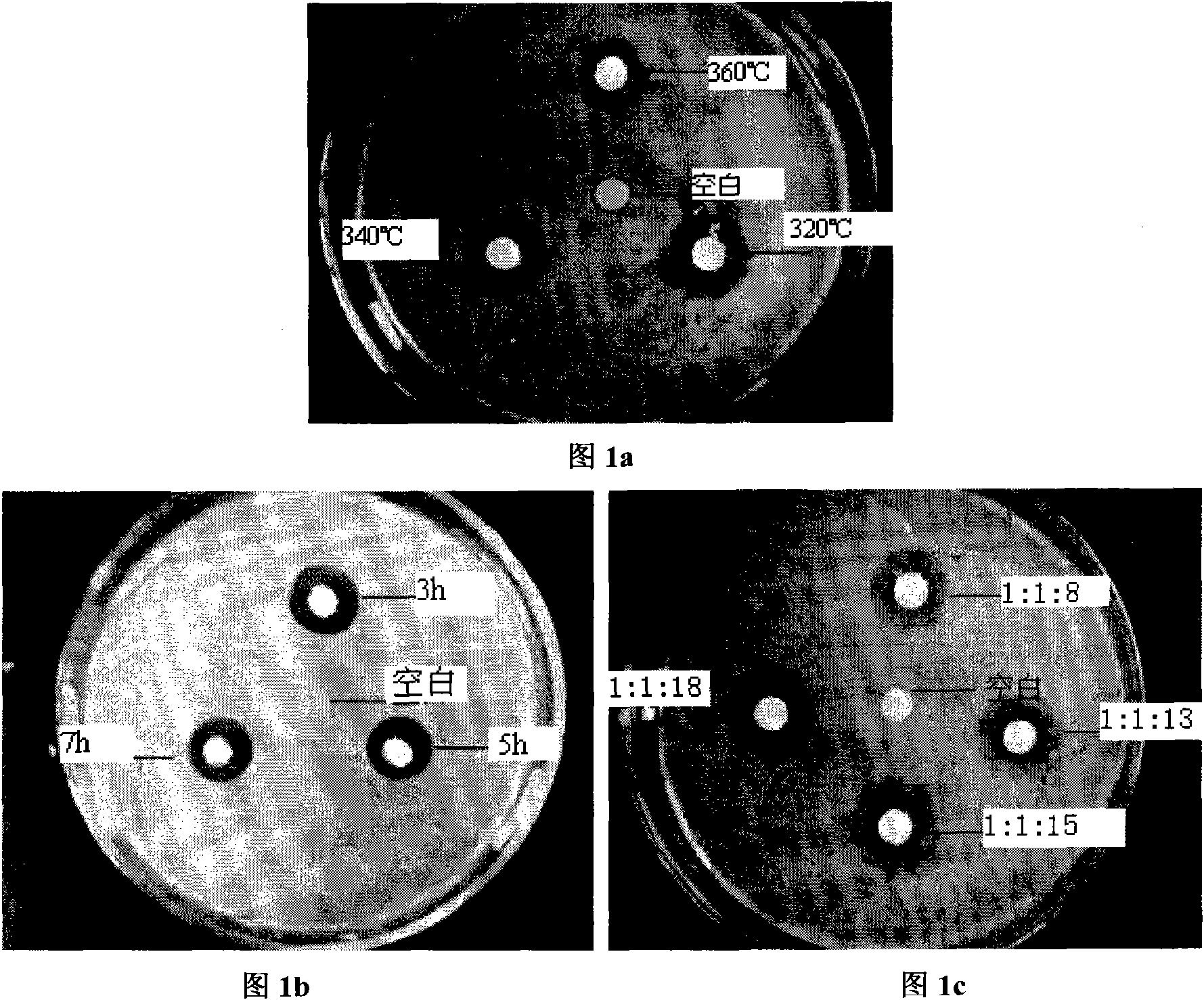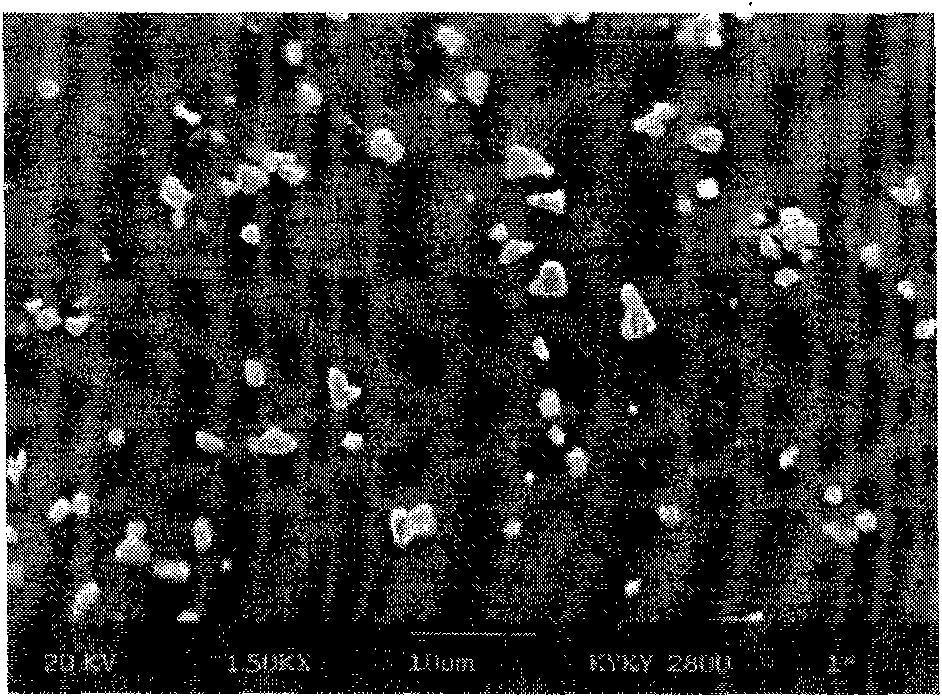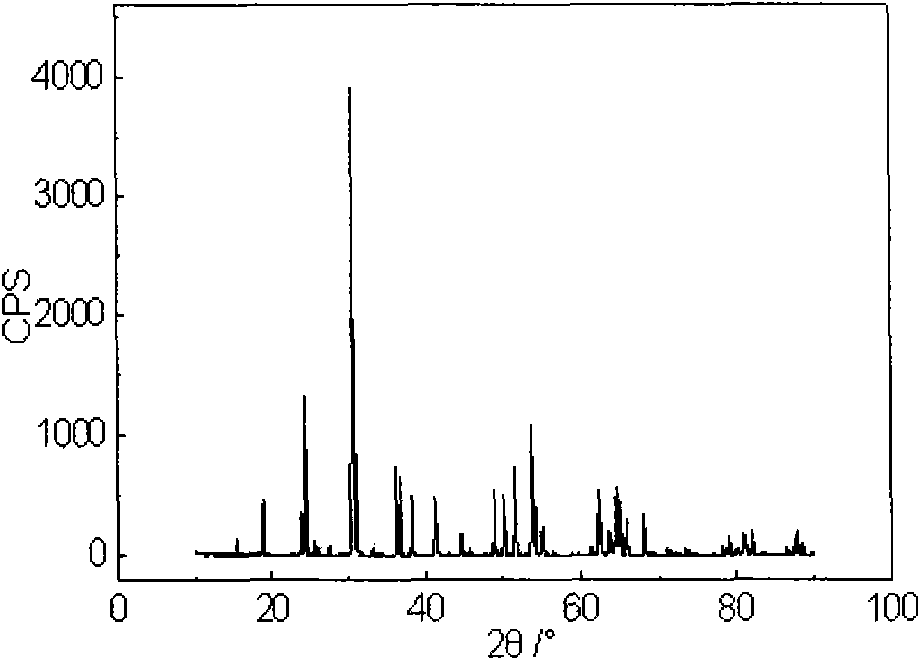Method for preparing zinc molybdate ultrafine anti-bacterial powder by adopting molten-salt growth method
A technology of antibacterial powder and zinc molybdate, applied in botany equipment and methods, chemicals for biological control, chemical instruments and methods, etc., can solve the problems of discoloration of antibacterial materials and high cost of silver-based antibacterial agents, and achieve improvement Antibacterial performance, high cost solution, and optimized synthesis conditions
- Summary
- Abstract
- Description
- Claims
- Application Information
AI Technical Summary
Problems solved by technology
Method used
Image
Examples
Embodiment 1
[0018] According to the molar ratio of sodium molybdate, zinc nitrate, and sodium nitrate being 1:1:8, a total of 10-20 g of the three materials were weighed and placed in a mortar, and 1-2 mL of absolute ethanol was added to grind for 2 hours to make the raw materials sodium molybdate, Zinc nitrate and salt sodium nitrate are fully mixed evenly. Then, put the mixture into a crucible, dry it at 90°C for 2-4 hours, and put it into an electric furnace for calcination at 320-360°C for 3 hours. Fully soak and wash the calcined solidified product with distilled water, then filter and dry to remove the remaining molten salt to obtain white ultrafine zinc molybdate antibacterial powder.
Embodiment 2
[0020] According to the reactant raw material sodium molybdate, zinc nitrate and salt material sodium nitrate molar ratio is 1:1:18, weigh the three materials in total 10 ~ 30g and put them in the mortar, and add an appropriate amount of absolute ethanol to grind for 1h to make the reactant The raw materials and salt are fully mixed evenly. Then, the mixture was put into a crucible, dried at 90° C. for 2 hours, and then calcined in an electric furnace at 320° C. for 3 hours. The solidified product obtained after calcination is fully soaked and washed with distilled water, then filtered and dried to remove the remaining molten salt, and the obtained zinc molybdate has a more uniform particle size, good dispersibility, and a spherical shape. The particle size is about 2 μm.
PUM
| Property | Measurement | Unit |
|---|---|---|
| Particle size | aaaaa | aaaaa |
Abstract
Description
Claims
Application Information
 Login to View More
Login to View More - R&D
- Intellectual Property
- Life Sciences
- Materials
- Tech Scout
- Unparalleled Data Quality
- Higher Quality Content
- 60% Fewer Hallucinations
Browse by: Latest US Patents, China's latest patents, Technical Efficacy Thesaurus, Application Domain, Technology Topic, Popular Technical Reports.
© 2025 PatSnap. All rights reserved.Legal|Privacy policy|Modern Slavery Act Transparency Statement|Sitemap|About US| Contact US: help@patsnap.com



